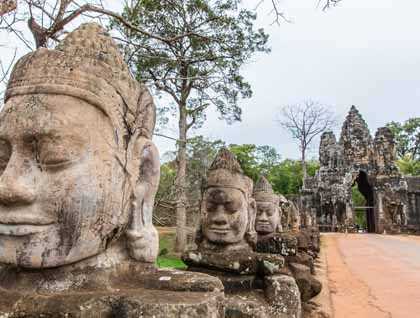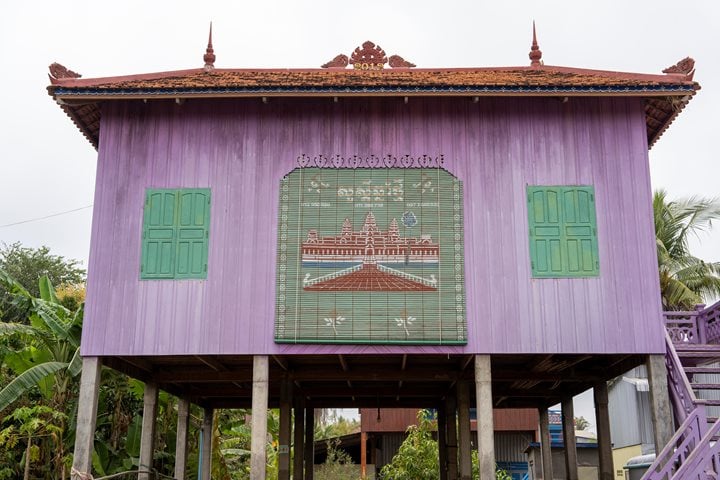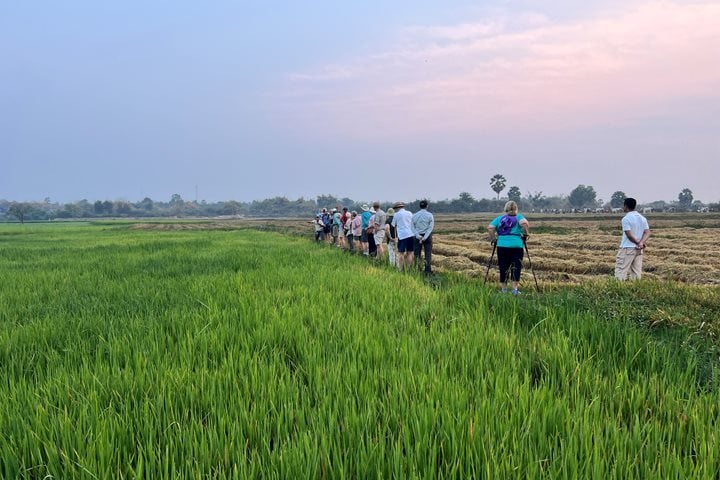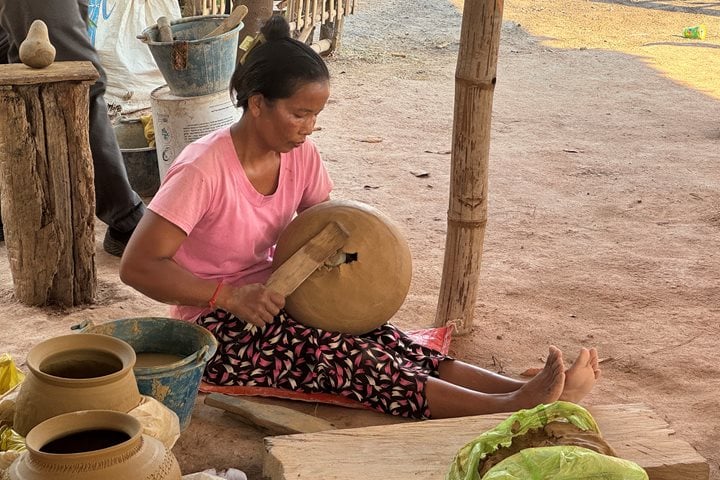The best way to visit Angkor Thom is obviously by Tuk Tuk and it is exactly what we did.
We Entered Angkor Thom by the south gate and this gave us the opportunity to admire once more the organization of the two lines of giants, Devas and Asuras. This representation suggests the myth of the churning of the ocean in unison by the gods and demons in order to extract the elixir of life.
The Bayon temple was of course the logical continuation. Such a structure has been and still is a constant challenge even to the most imaginative minds. For scholars who dedicated their life to the analysis of the temple or for occasional visitors, the Bayon remains a mystery and a source of wonder.
The Bayon is the only temple to have an outer gallery accessible to the mass of the faithful, which was dedicated to scenes of everyday life.
Amongst the most important scenes, there is a naval combat that took place between the Khmer (whose hair is cut short) and the Chams (coiffed with a sort of upturned lotus flower). It shows a conflict of battleships with richly ornate prows - like galleys – where the line of oarsmen’s heads is dominated by warriors armed with javelins, bows and shields. Bodies are thrown overboard, some to be devoured by crocodiles. On the banks of the lake events from everyday life are shown, depicted with much candor and humor, market scenes, scenes of open-air cooking, of hunting or of attack by wild animals. A hunter preparing to shoot a buffalo holds his crossbow - similar to the weapon still favored in present day Cambodia.
It’s worth noticing that without the bas-reliefs of the Bayon we would not be able to have the slightest idea about the daily life seven centuries ago.
As we passed the south entrance to climb to the top of the temple, we can’t refrain from having the impression of an architectural absurdity which results in a total confusion. On the upper terrace, however, calm returns. Dwarfed by the serenity of these stone faces, we no longer think of the confusion in the plan.
To conclude the reign of Jayavarman VII, our Tuk Tuk took us to the Leper king terrace and the elephants terrace where we ended our morning visit.









